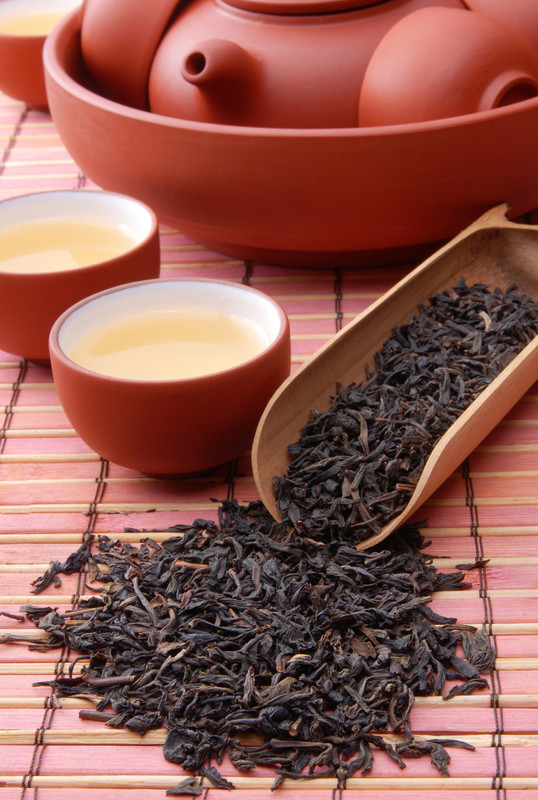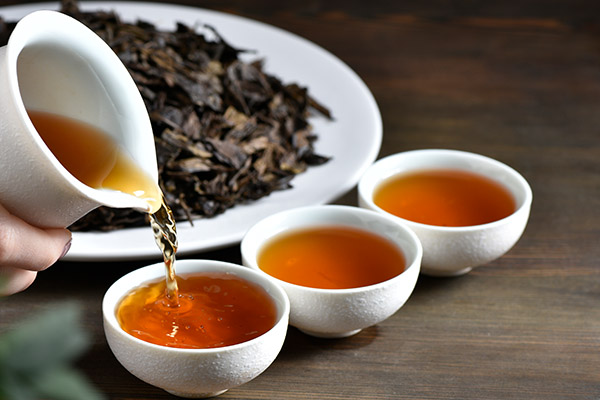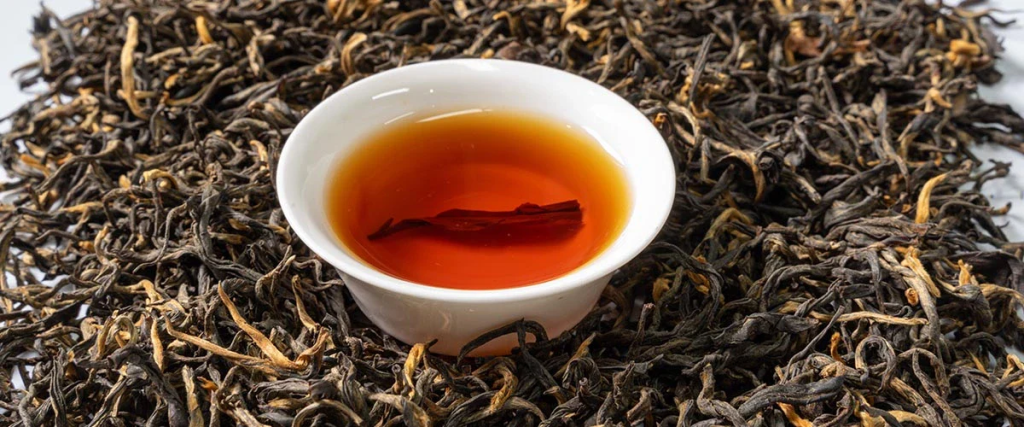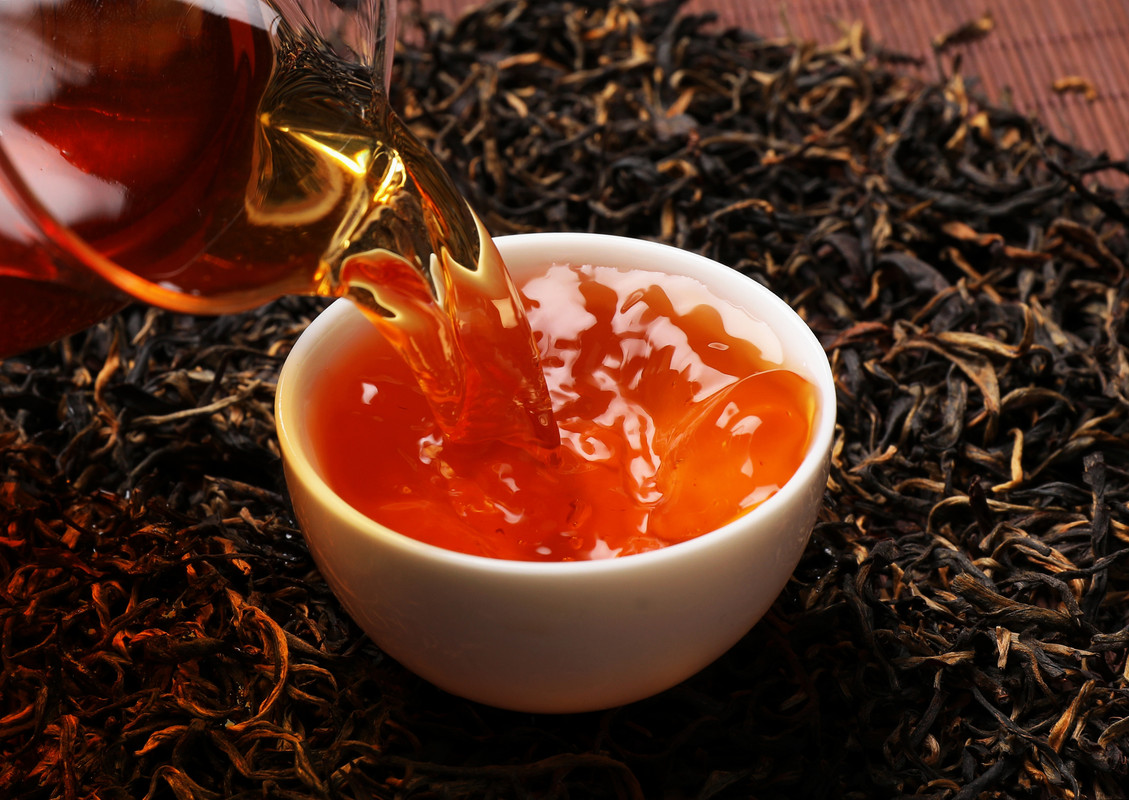Chinese black tea, known for its rich flavors, aromatic complexity, and cultural significance, holds a prominent position in the global tea landscape. Unlike the unoxidized green teas or partially oxidized oolongs, black tea (referred to as hongcha or “red tea” in China due to its crimson liquor) undergoes full oxidation, resulting in bold, malty, or fruity profiles. Over centuries, diverse regions in China have developed unique black tea varieties, each reflecting local terroir, craftsmanship, and traditions. Below is a detailed classification of China’s most celebrated black teas.

1. Keemun Black Tea (Qimen Hongcha)
Origin: Qimen County, Anhui Province
Characteristics: Regarded as the “Burgundy of Teas,” Keemun is famed for its floral aroma (often likened to orchids), smoky undertones, and a wine-like sweetness. Its tight, slender leaves yield a bright reddish infusion with a balanced astringency.
Subtypes:
- Keemun Maofeng: Made from tender buds and leaves, offering a smoother, fruitier profile.
- Keemun Xiangluo: Curled leaves with a stronger smoky flavor.
2. Dianhong (Yunnan Black Tea)
Origin: Yunnan Province
Characteristics: Crafted from large-leaf tea cultivars (Camellia sinensis var. assamica), Dianhong boasts a robust body, golden tips, and notes of caramel, honey, or dried fruit. High-quality variants like Dianhong Gongfu feature abundant golden buds, while Yunnan Broken Black Tea is bolder and often used for milk tea.
Notable Variant: Jin Jun Mei (Golden Beautiful Eyebrow), a premium tea made exclusively from young buds, offering a sweet, velvety texture.
3. Lapsang Souchong (Zhengshan Xiaozhong)
Origin: Wuyi Mountains, Fujian Province
Characteristics: The world’s earliest black tea, dating back to the 17th century. Authentic Lapsang Souchong is smoked over pinewood fires, imparting a distinctive smoky aroma reminiscent of campfire or dried longan. The leaves are thick and dark, producing a deep amber liquor with a lingering sweetness.
Protected Designation: Only teas from Tongmu Village, Fujian, can bear the name “Zhengshan Xiaozhong.”
4. Jin Jun Mei
Origin: Tongmu Village, Fujian Province
Characteristics: A modern premium tea developed in 2005, Jin Jun Mei uses exclusively young tea buds coated in fine golden hairs. Its flavor is delicate yet complex, with layers of floral, fruity, and honeyed notes. The liquor is bright golden-orange, setting it apart from darker Chinese black teas.
5. Sichuan Black Tea (Chuanhong)
Origin: Sichuan Province
Characteristics: Grown in high-altitude regions, Sichuan black teas are less oxidized, resulting in a lighter body and fresh, floral character. Varieties like Emei Hongcha from Mount Emei combine subtle sweetness with a hint of spice.
6. Yingde Black Tea
Origin: Yingde, Guangdong Province
Characteristics: Often compared to Assam teas for their malty richness, Yingde black teas are bold and full-bodied, with a coppery-red infusion. They are commonly blended for breakfast teas or enjoyed with milk.
7. Minhong (Fujian Black Tea)
Origin: Fujian Province (excluding Wuyi)
Characteristics: Fujian produces diverse black teas beyond Lapsang Souchong. Tanyang Gongfu, for instance, is a fruity, mildly smoky tea with golden tips, while Bailin Gongfu offers a mellow, sweet profile.
Classification by Processing Techniques
Chinese black teas are also categorized by production methods:
- Gongfu Black Tea: Labor-intensive, emphasizing whole leaves and meticulous rolling to enhance aroma (e.g., Keemun, Dianhong).
- Xiaozhong Black Tea: Traditional smoked varieties like Lapsang Souchong.
- Broken Black Tea: Smaller leaf particles for stronger brews, often used commercially.
Conclusion
The diversity of Chinese black tea stems from centuries of innovation and regional pride. From the pine-smoked depths of Lapsang Souchong to the golden elegance of Jin Jun Mei, each variety tells a story of its homeland. Whether sipped neat or paired with food, these teas offer a gateway into China’s rich cultural and agricultural heritage—a true celebration of flavor and tradition.



